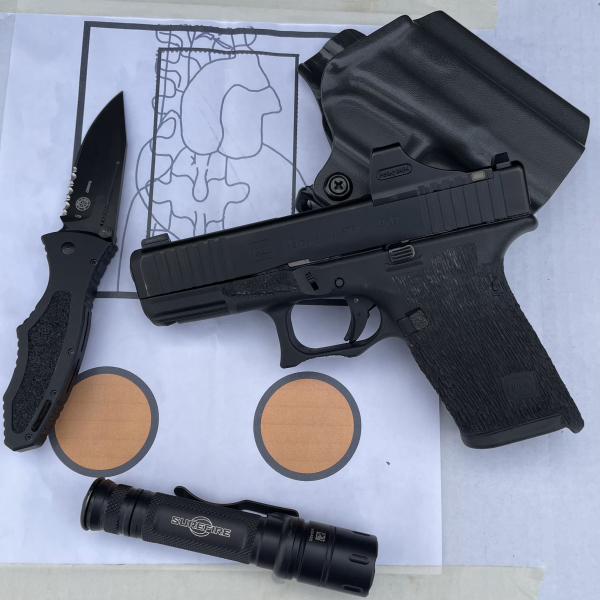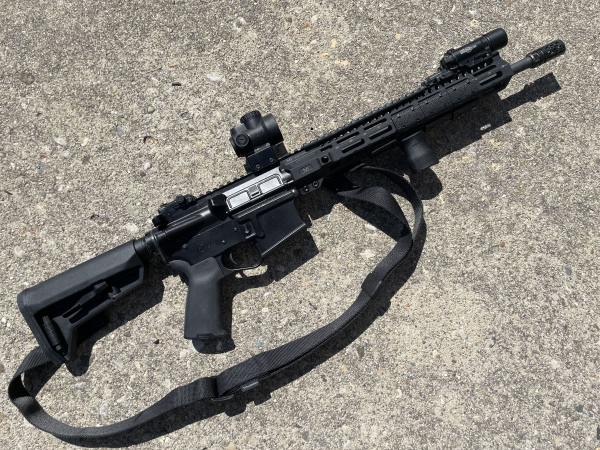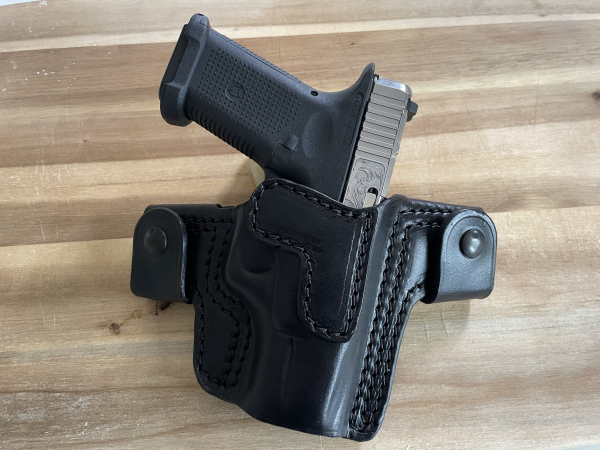Today’s feature is from correspondent Dave Spaulding.
I wrote my first published article in 1987 for the Ohio Tactical Officers Newsletter. My first nationally published article came in the spring of 1988 for COMBAT HANDGUNS Magazine. People ask me regularly how to get started in gun writing. Truth be told, I have no idea. My first article was requested of me by COMBAT HANDGUNS Editor Harry Kane due to a conversation he had with Smith & Wesson PR Director Sherry Collins about a special Smith & Wesson pistol my agency purchased for our SWAT Team. Harry called me at my former agency and asked if I had ever written an article and would I consider doing it? The rest is history.
Since that time, I have written over 1,500 articles and columns on a wide range of firearms topics, focusing on law enforcement and personal security. At one time, I had three columns going at once -- “Plainclothes” in GUNS AND WEAPONS FOR LAW ENFORCEMENT, “Firearms” in LAW OFFICER Magazine and “On Patrol” in HANDGUNS Magazine. I quit writing a few years back to focus on my training company. Now that I have closed the business and have more time, I find I enjoy writing again.
Since most articles and columns were product reviews, it is safe to say I have seen a lot of gadgets, gizmos and gee-gaws -- enough to last me a lifetime. “But you haven’t seen the current generation of gear, Dave!” Really? Do you really think the stuff that is currently being introduced is truly “original”? It might be “new” to you, but little of it is new to me. A new generation of floating handguards for an AR does not excite me much. It’s a metal tube, so what? A new optic? Looks a lot like the same stuff we had years back. Yes, more reliable but still a red dot. How about a compensator on a 9mm pistol? Yawn. I saw my first Kydex holster in the early 1980’s as made by Bill Rogers of the Rogers Holster Company, now part of Safariland. It was good stuff then and would still be considered top quality. Ammo? Yes, we have the best combative-grade ammo of all time, but it is still a hollow point and Winchester Silvertip was damn good regardless of what the FBI claimed. I know for a fact it worked very well in many shootings.
That said gear in all of its forms is the best ever. These days I no longer get “gun writer handouts,” i.e., test products. I pay for my gear, so like most of you I want to spend my money wisely. What I thought I would do here is talk about some stuff that has worked for me, not just recently, but over many, many years, sometimes decades! In a few cases, it’s fairly recent stuff. No, it may not be the “cutting edge” but I have found I seldom want to be the first person to use new gear. I want to see the stuff that has been proven time and again in the field and on the street.
Let’s look at the list:

Glock Pistols. I resisted the plastic gun for many years, after all guns are made from steel and have a hammer. I’m glad I finally realized my error. They are tough, simple and work in all weather conditions. I have to modify the grip, but I will admit the 5th Generation is a step in the right direction. Custom modification to a carry gun is as American as apple pie, so I don’t consider “enhancements” (modifications that improve performance) to be a bad thing. I think the Glock 19 is the best of the product line being both big enough to shoot well but small enough to carry and conceal. My current carry gun is a 5th Generation G19 with a 1911-style grip reduction performed by David Bowie of Bowie Tactical Concepts. The trigger guard is undercut to permit better hand placement with a left side thumb pad that allows me to build my grip correctly every time. Beyond these changes, it is a mostly stock pistol with a carry optic attached -- in this case, the low riding Holosun MOS SCS. Yes, I have moved over to the “Dot Side” as I can see the bright glowing dot with my 68-year-old eyes sans corrective lenses. But I have to admit, I went over to the dot sight “screaming and kicking.”
Ruger Revolvers. While Smith & Wesson was once THE revolver of American law enforcement, I found Ruger to be more robust with better trigger actions. Customer service is superior, too. The Speed, Service and Security Six revolvers were similar in size to the Model 19 while the GP-100 was their answer to the L Frame. Currently, the LCR snubby is the class of the field with a smooth trigger, useable sights and a grip that is not too big or too small and comes in multiple calibers.

The AR-15 carbine. I used to get asked regularly, “why don’t you teach an AR carbine class?” I did not carry or use one while I was in law enforcement. Since I had no practical experience with the platform, I felt it would be disingenuous to teach folks to use it. While in SWAT, I was issued an HK MP-5, a gun I still like a lot. That said, when the AR really started to take off in the 1990’s, I decided I wanted to learn more about it so I bought several and started a training journey that included Thunder Ranch, TDI, Blackwater, Gunsite and Sentinel Concepts just to name a few. The more I trained with it, the more I liked it. As Pat Rogers told me “Keep it wet and it will run.” I have found that to be the case and have come to appreciate its simplicity and manipulation commonality with the semi-auto pistol. I now own just one, but it is set up just as I want it...simple, sleek, lightweight and easy to manipulate.

Holsters – leather: Alessi Leather (now Ritchie Leather). Lou Alessi was a friend and his concealment rigs were second to none! At the risk of sounding arrogant, his popular CQC and CQC-S (Ritchie CQ-QR) rigs were my idea, a claim that can be verified by Mike Boyle and Rich Grassi who were there when the holsters were “born.” We were visiting his shop during the 1997 ASLET Training Conference in Buffalo as I started telling Lou what I felt was wrong with his belt rig. Lou looked at me and says, “OK as*hole, (this was in fun BTW) what do you feel would be the perfect holster?” So, I told him. As I talked, he began to ask questions and saw the potential in what I was saying. Make no mistake, these were Lou’s designs, I just helped him in the right direction. Alessi Leather still exists through his former partner Skip Ritchie at Ritchie Leather and its where you will get Lou’s original designs. Skip operates out of the original Alessi shop using Lou’s actual dies. Little has changed and Skip is continuing the legend.
To be continued –